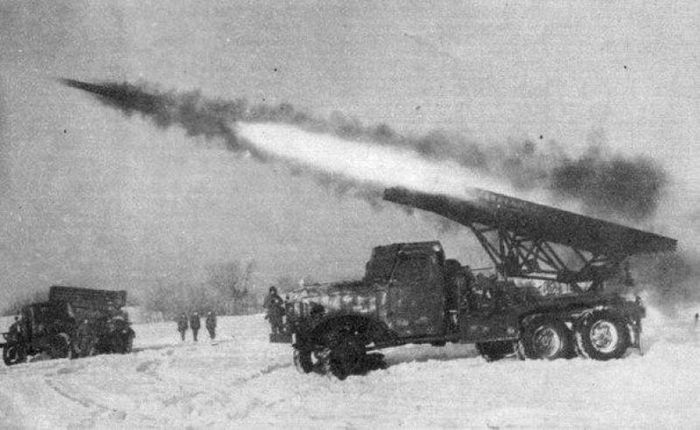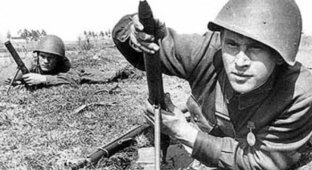Soviet grandfathers shocked the Germans (2 photos + text)
During the Second World War, the Soviet army had a lot of rockets in its arsenal. The most famous were considered to be the M-13, they were installed on Katyushas. Later the M-20 and M-30 appeared, and we’ll talk about them.

Somewhere in the middle of the forty-second year, the M-20 entered service with the Soviet army, the warhead of which was three and a half times more powerful than that of the M-13. Very soon the M-30 was put into service - six times more powerful than the M-13.
The M-20 was easily attached to the Katyusha, but due to its slightly larger size, these missiles had to be launched in one row, and not in two, like the M-13. But there was no way to change the guides for the M-30 (it’s worth noting that they were finally added to the Katyusha, but only in ’44). Therefore, to launch the M-30, they installed launchers with a simple system for adjusting the angle of inclination...
First four and then eight M-30s were placed on such a machine, right in the factory packaging container. The salvo was carried out using a conventional electric sapper machine, and, as a rule, several machines were included in the chain. The simultaneous launch ensured the addition of shock pulses, which greatly enhanced the effect compared to individual launches.

And so, due to the usual and understandable reluctance of end users to read the documentation (more precisely, the manuals were simply rolled into cigarettes), the following often happened on the battlefields. During preparation for launch, they often forgot to remove the spacers that held the projectile in a wooden box (factory packaging) during transportation. If the spacers were not removed, then all this hu#t@ started together with the box, and there were cases that it also started together with the machine!
This design had dimensions of approximately 1.5 by 2 meters, which led to conversations among the Germans that the Russians were completely crazy and were shooting at them with sheds!






















